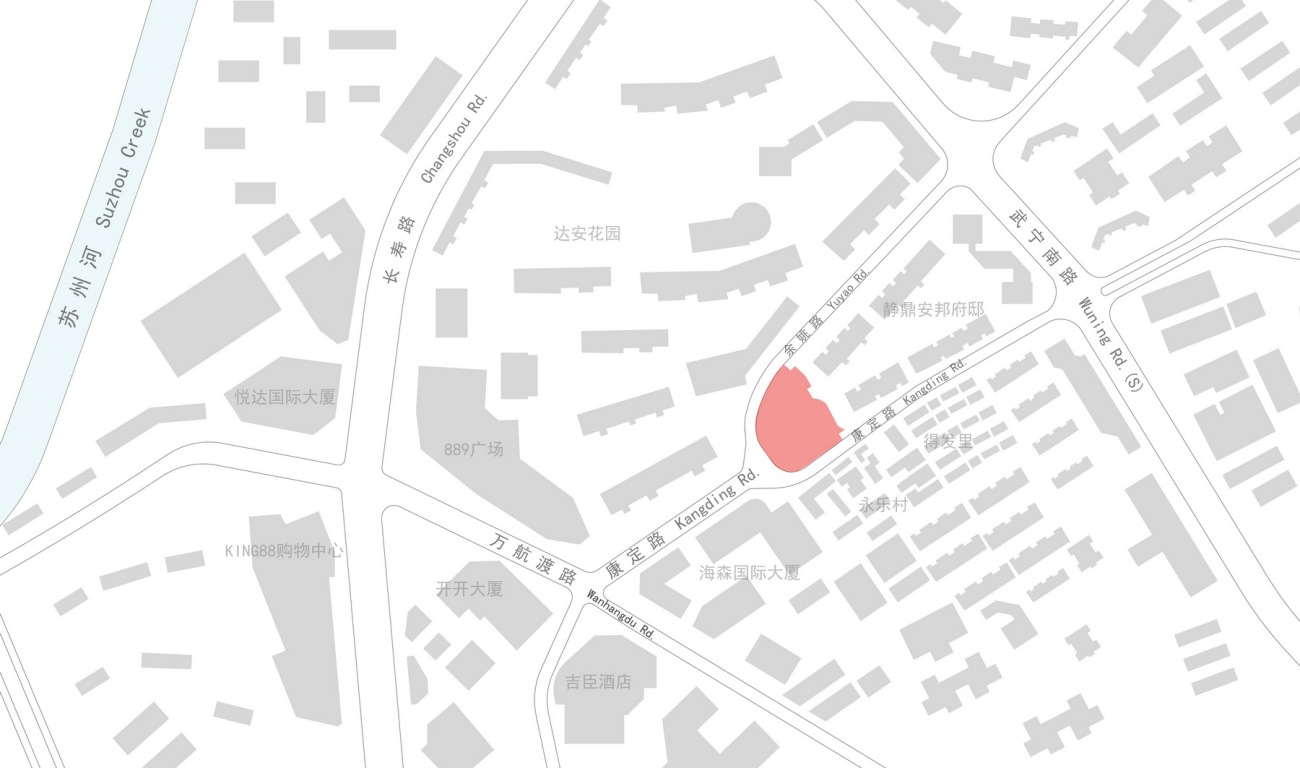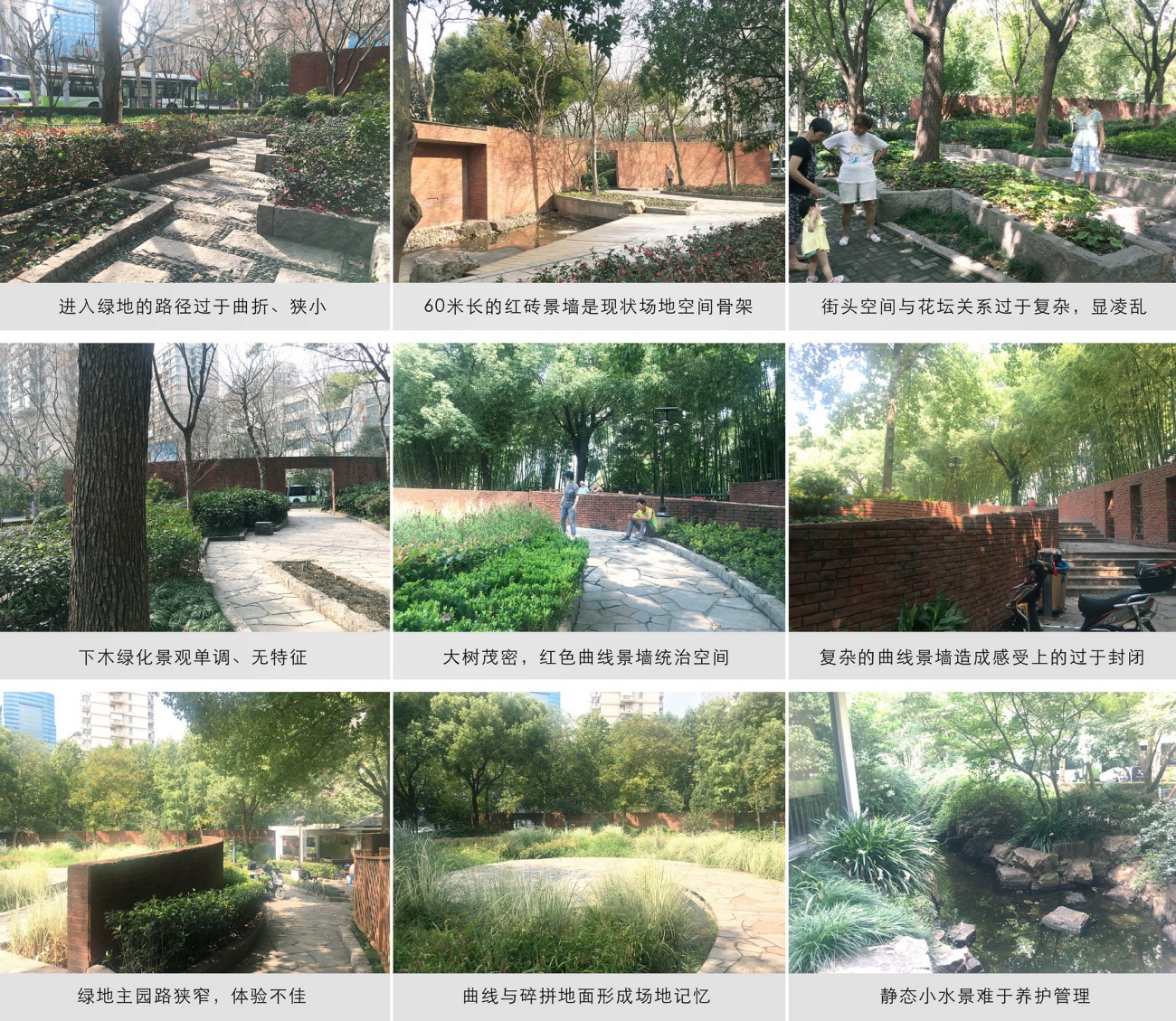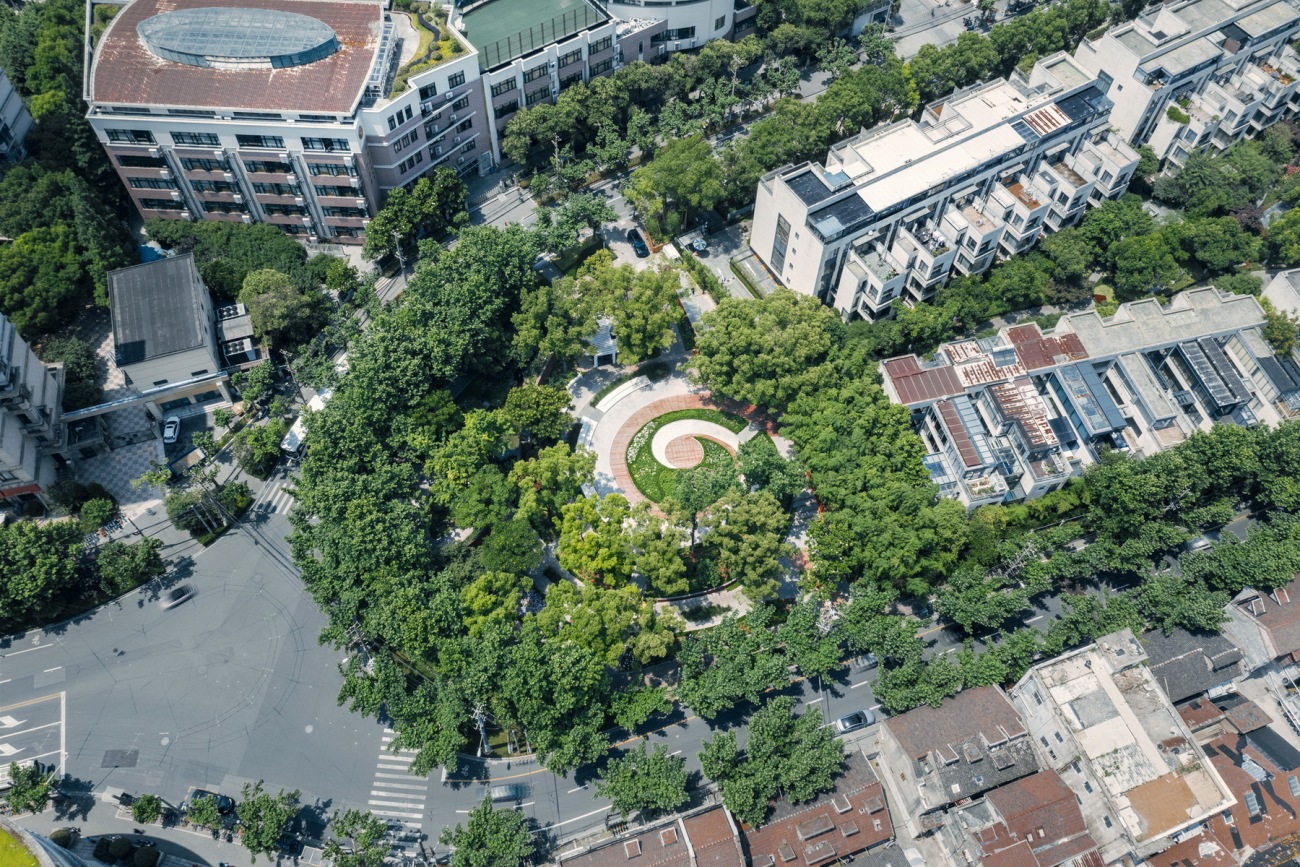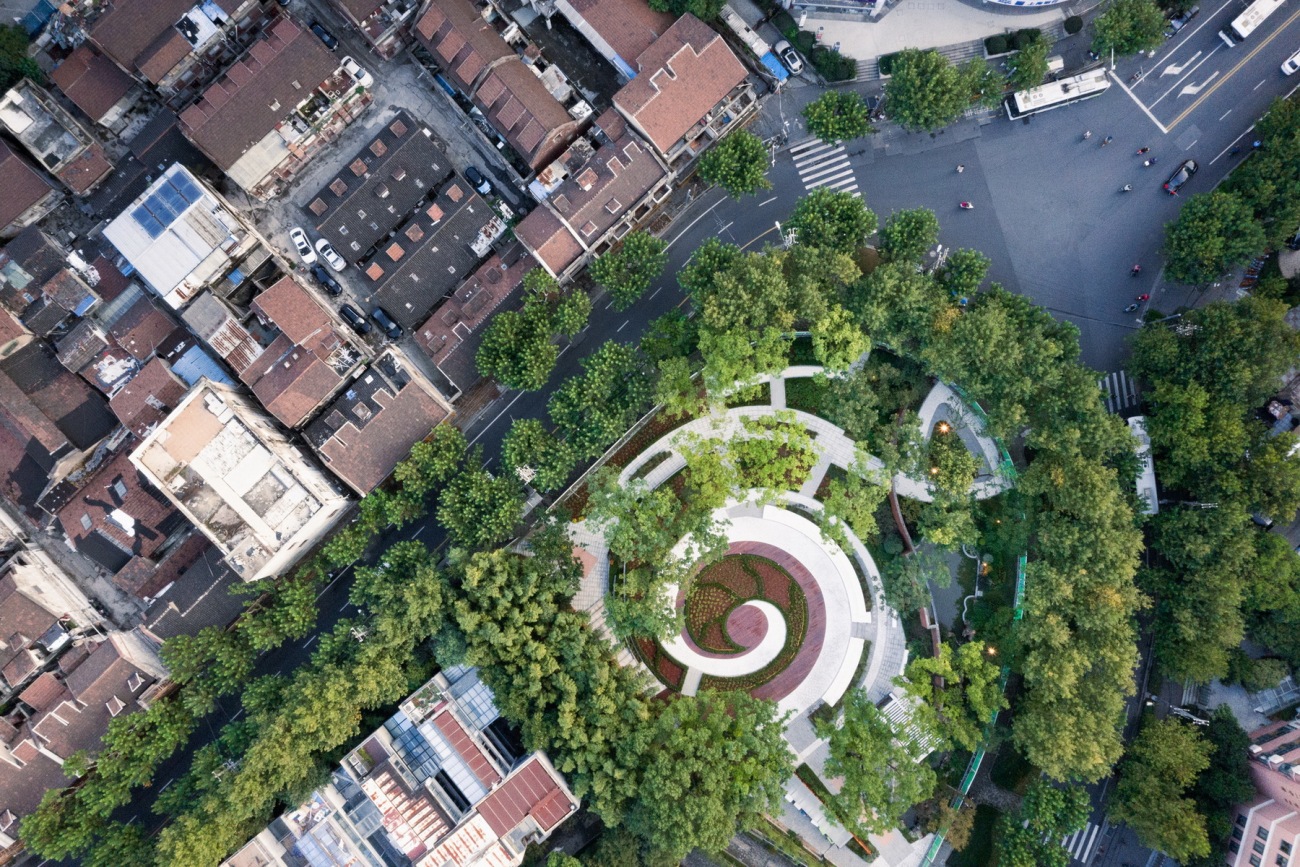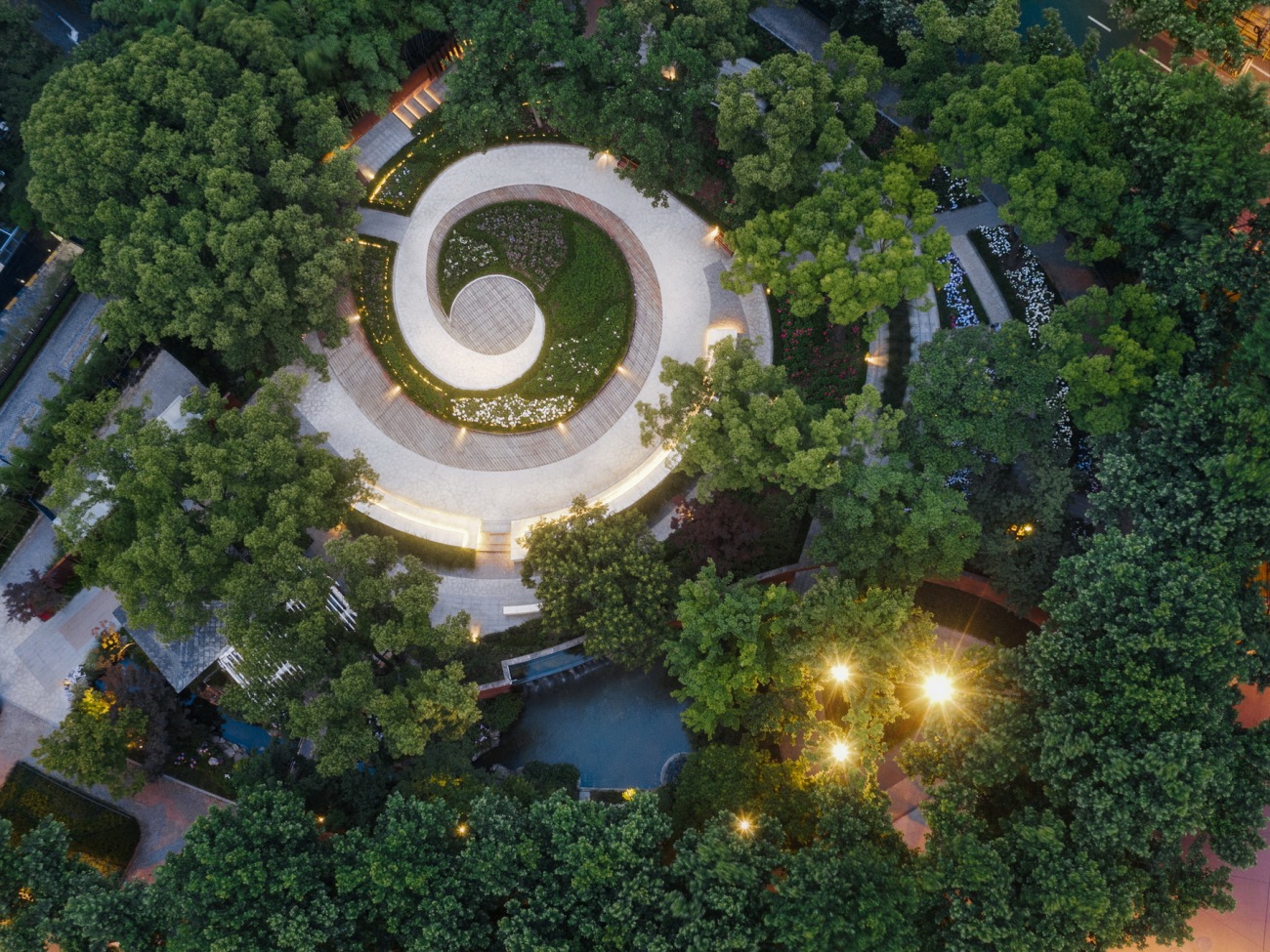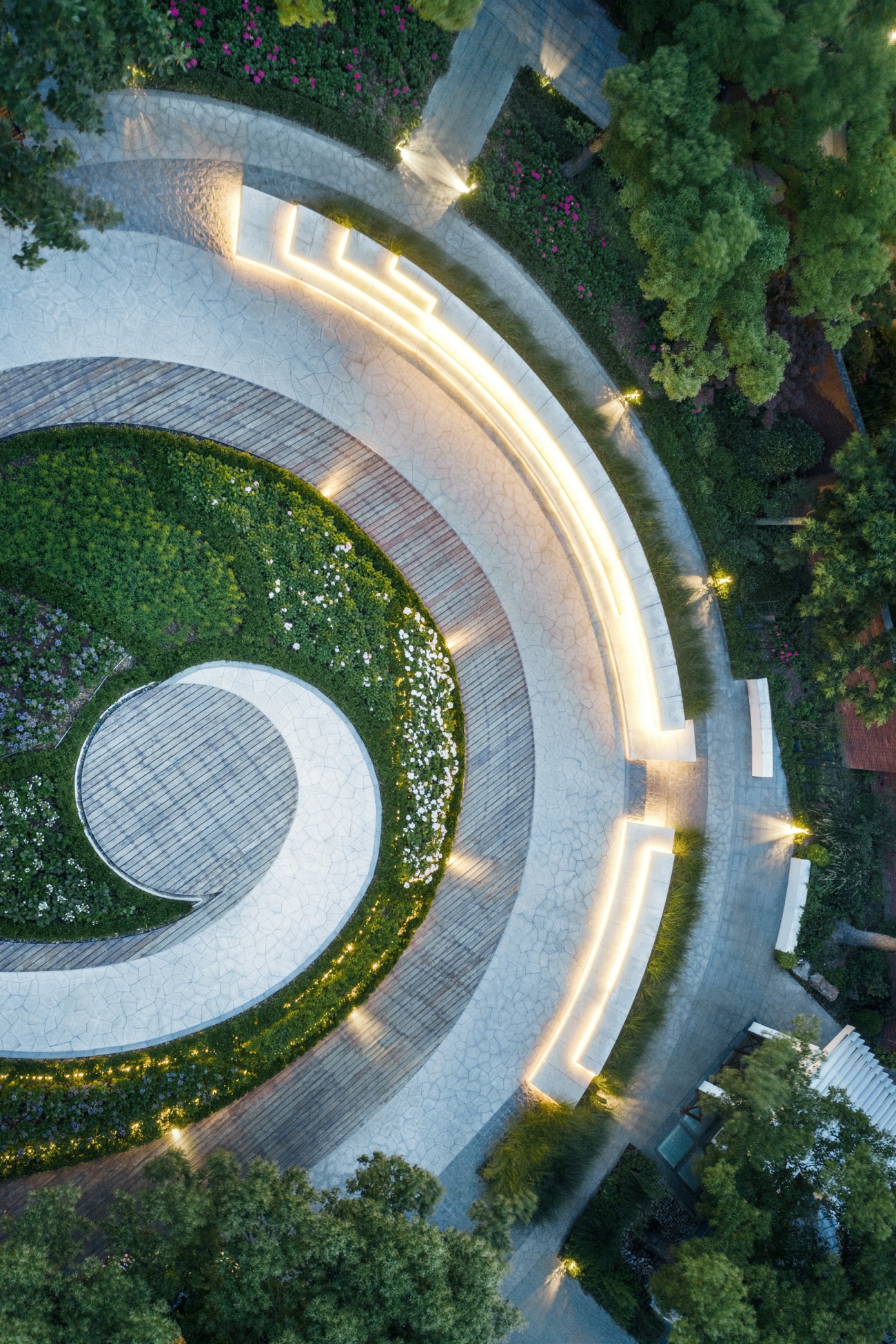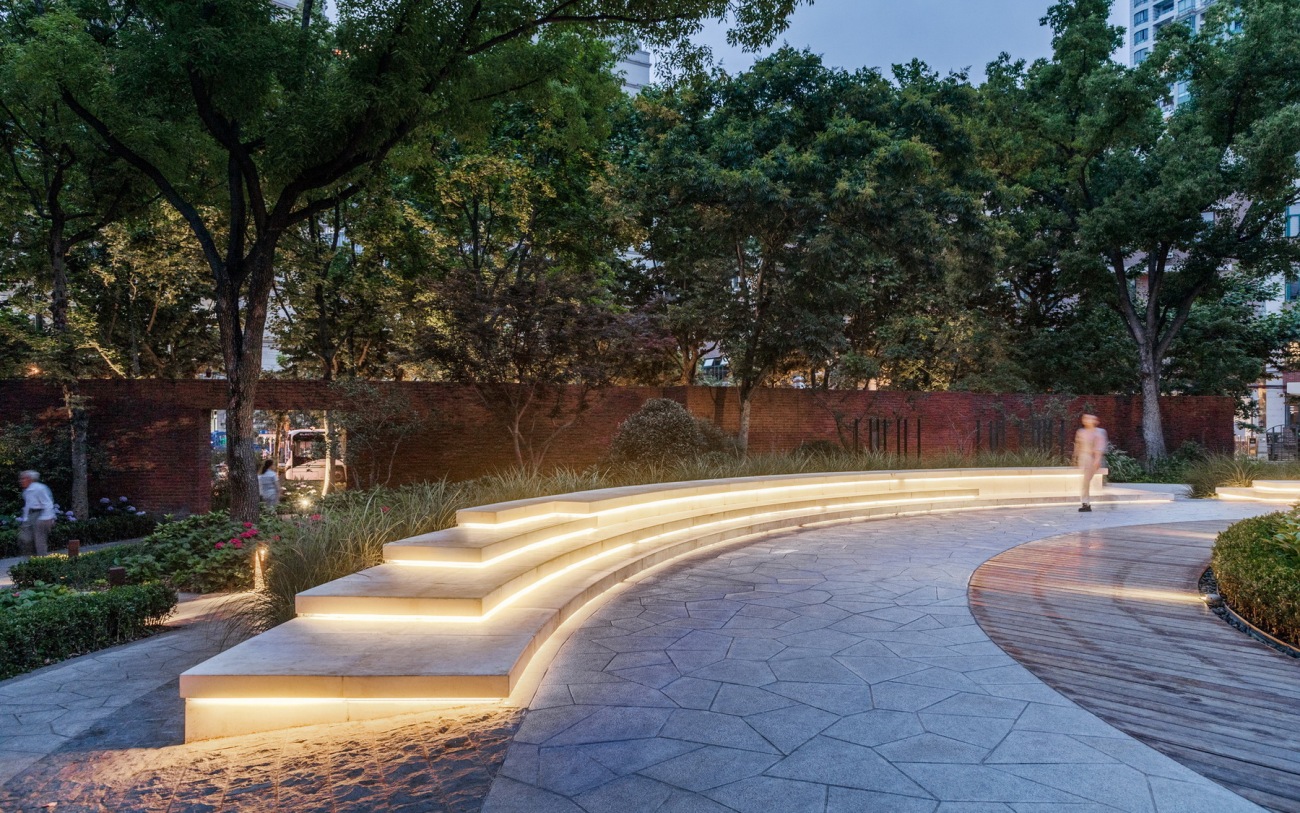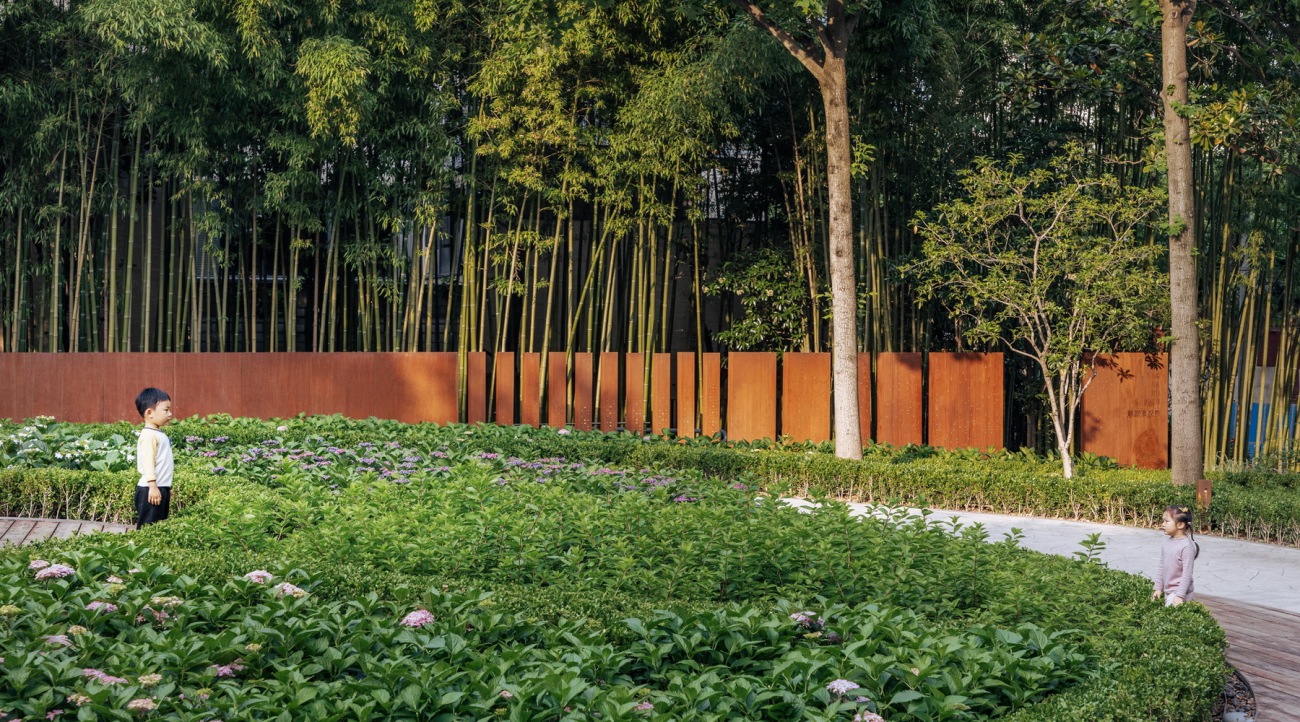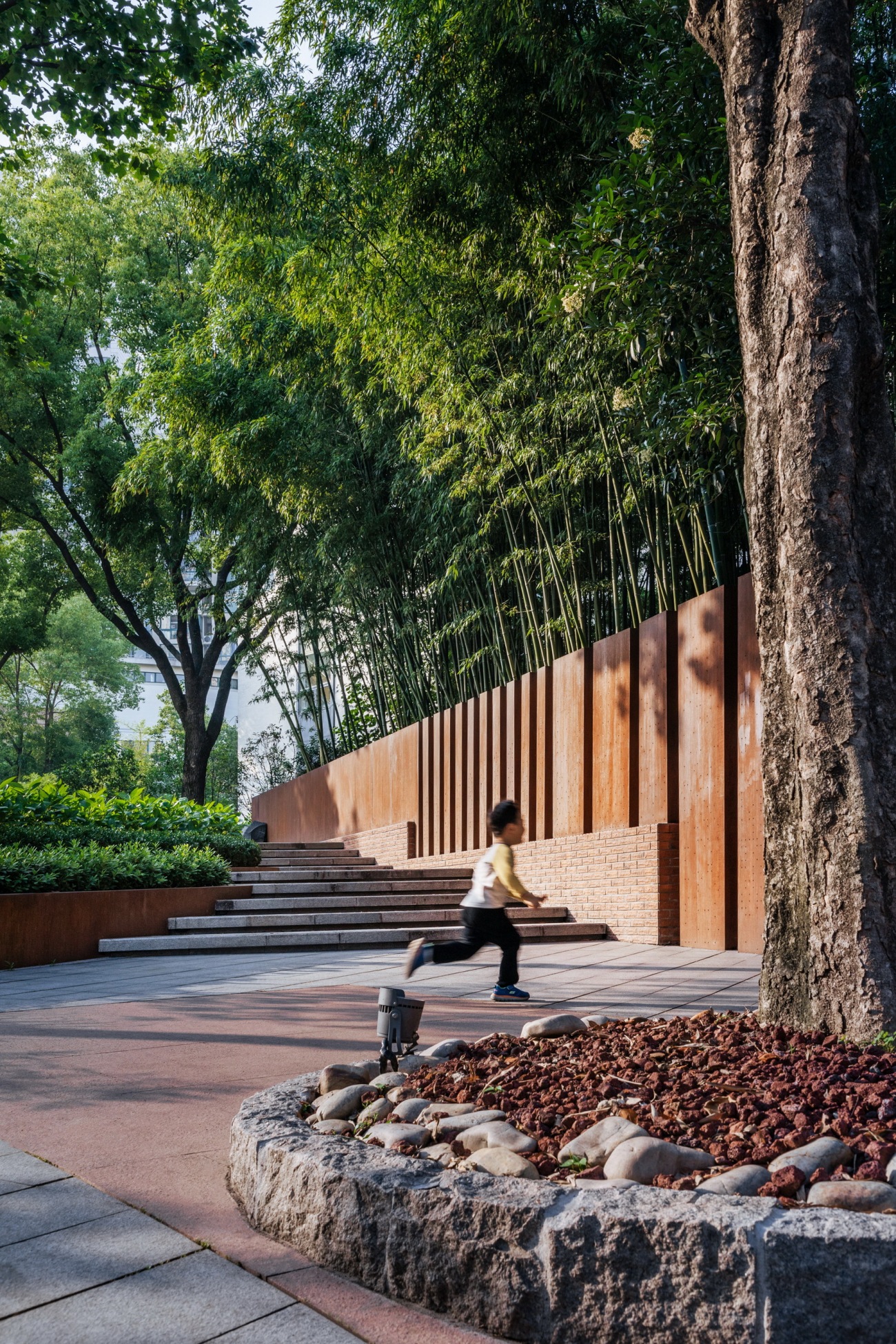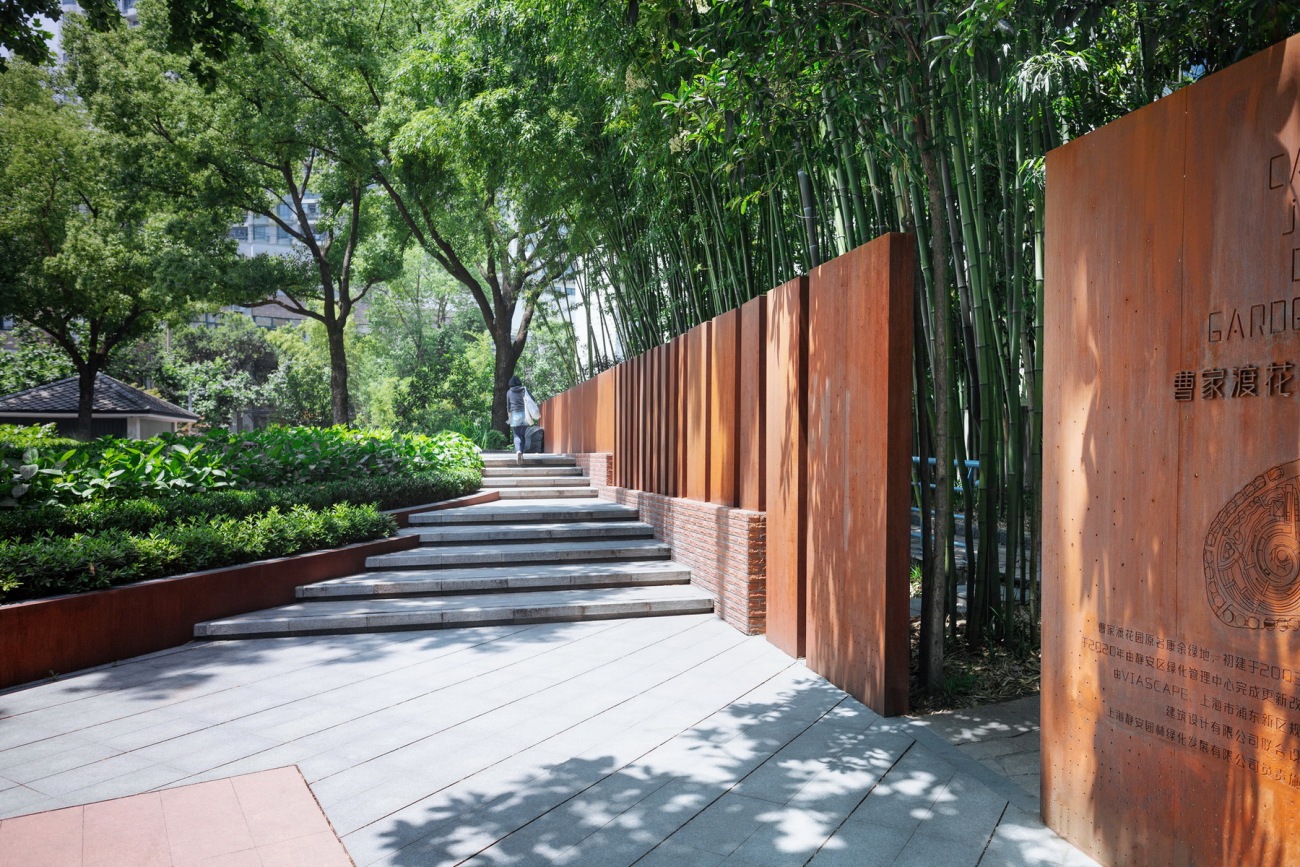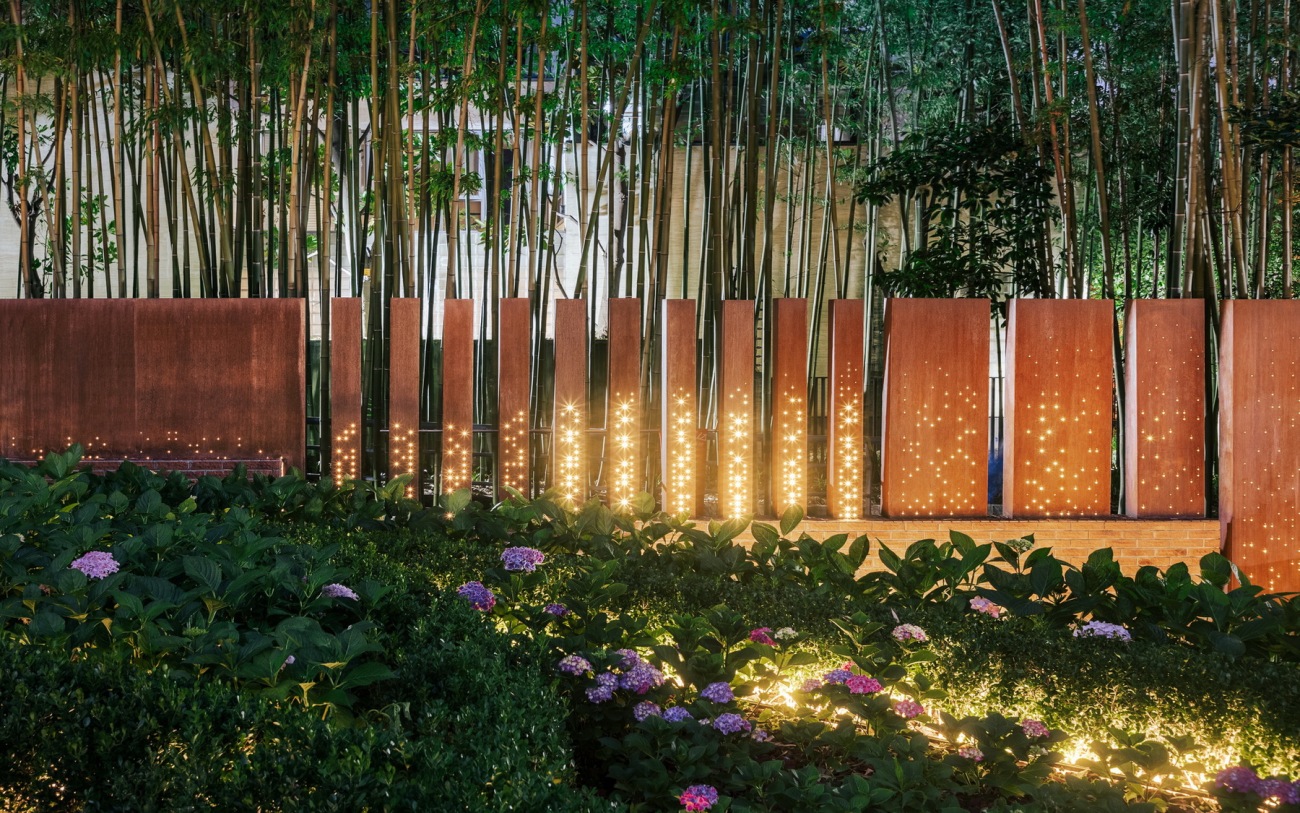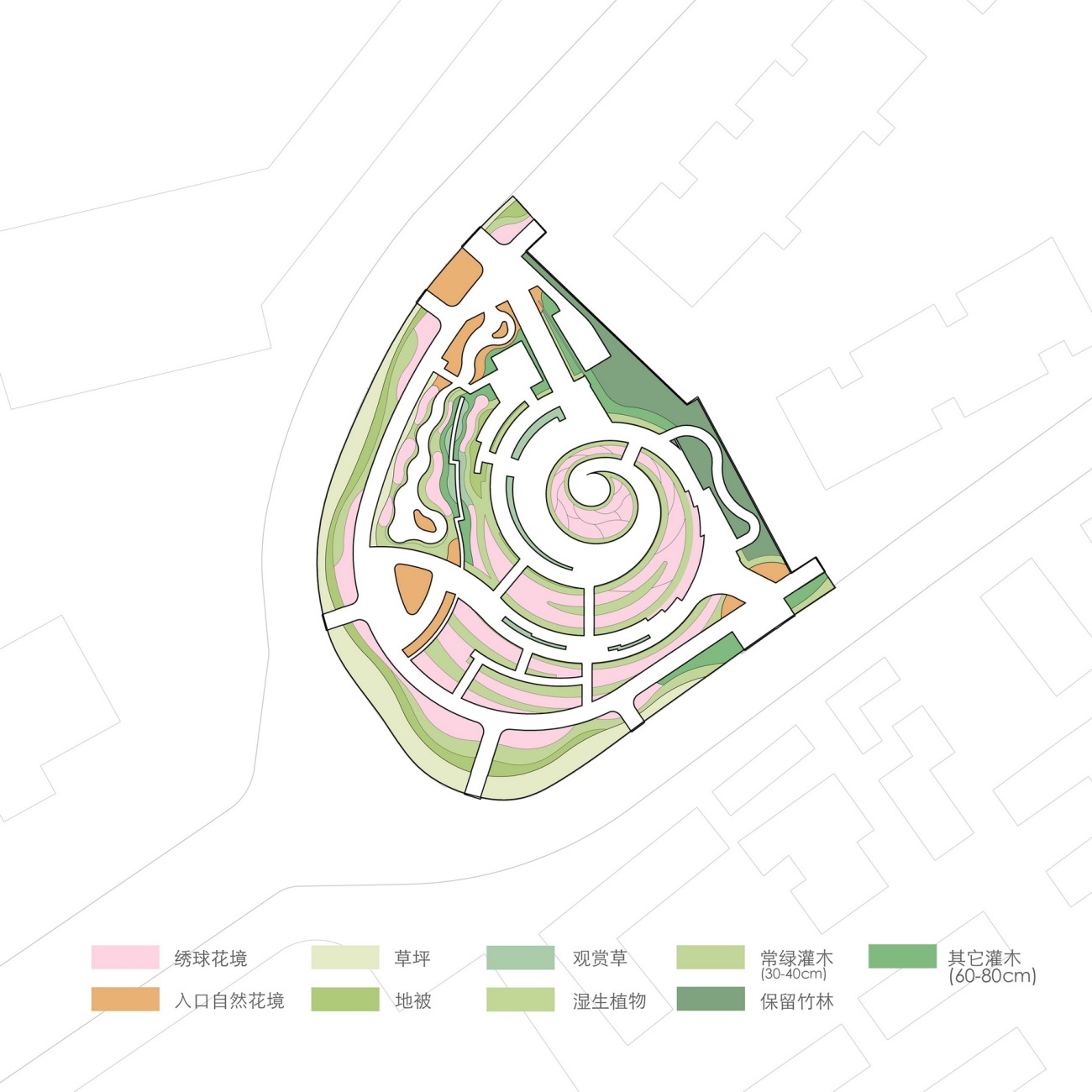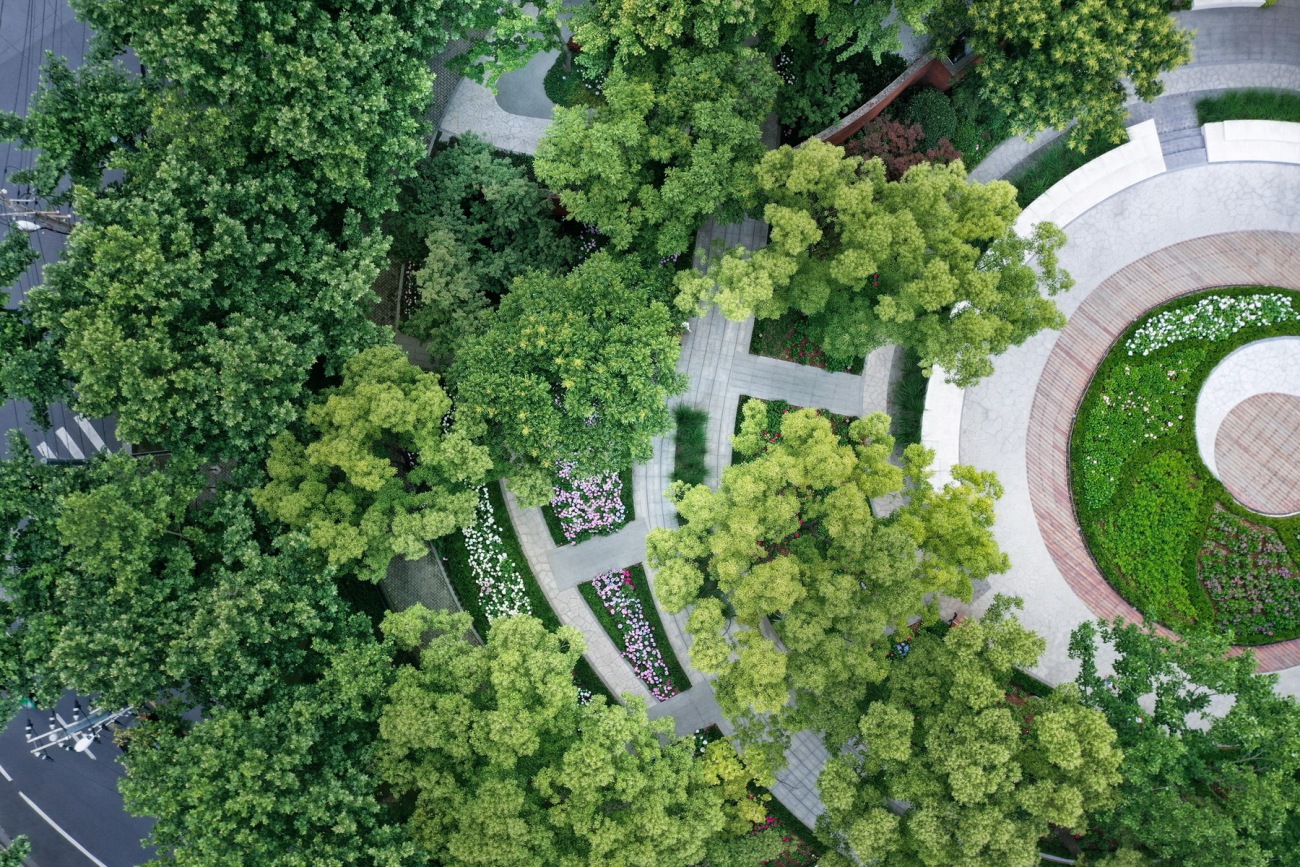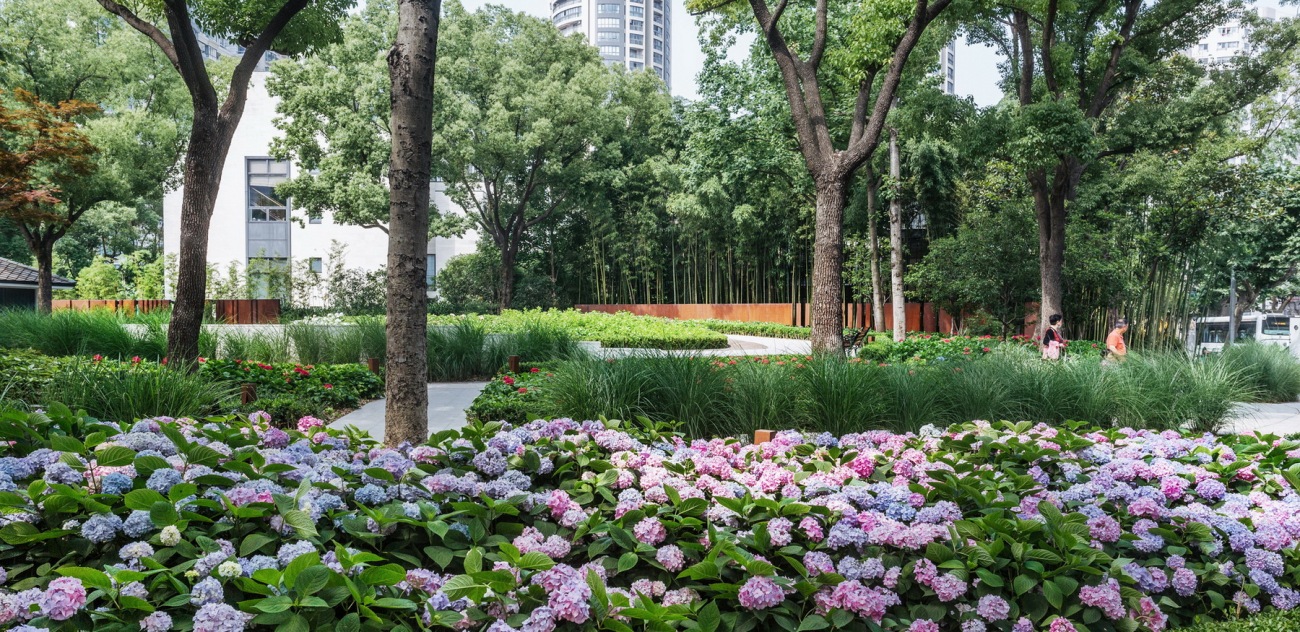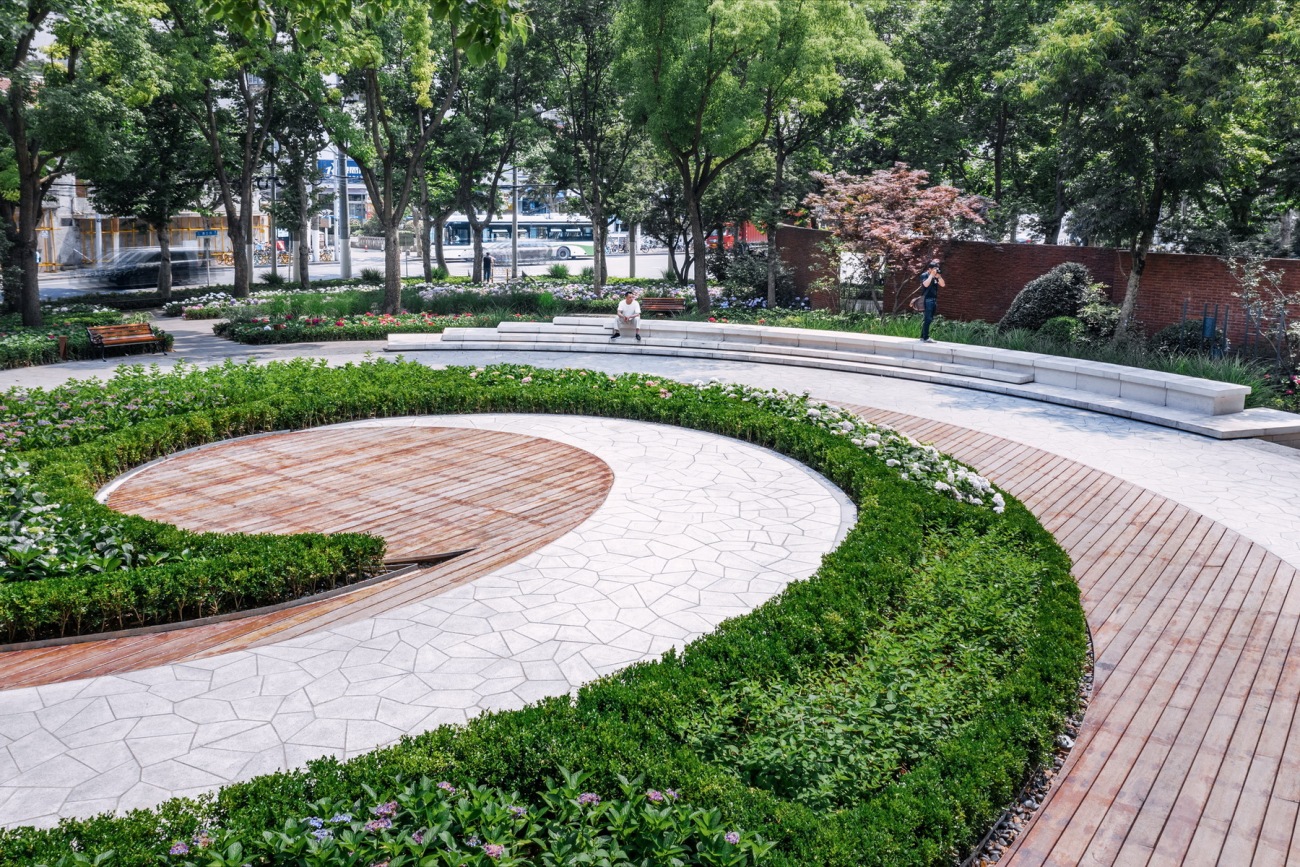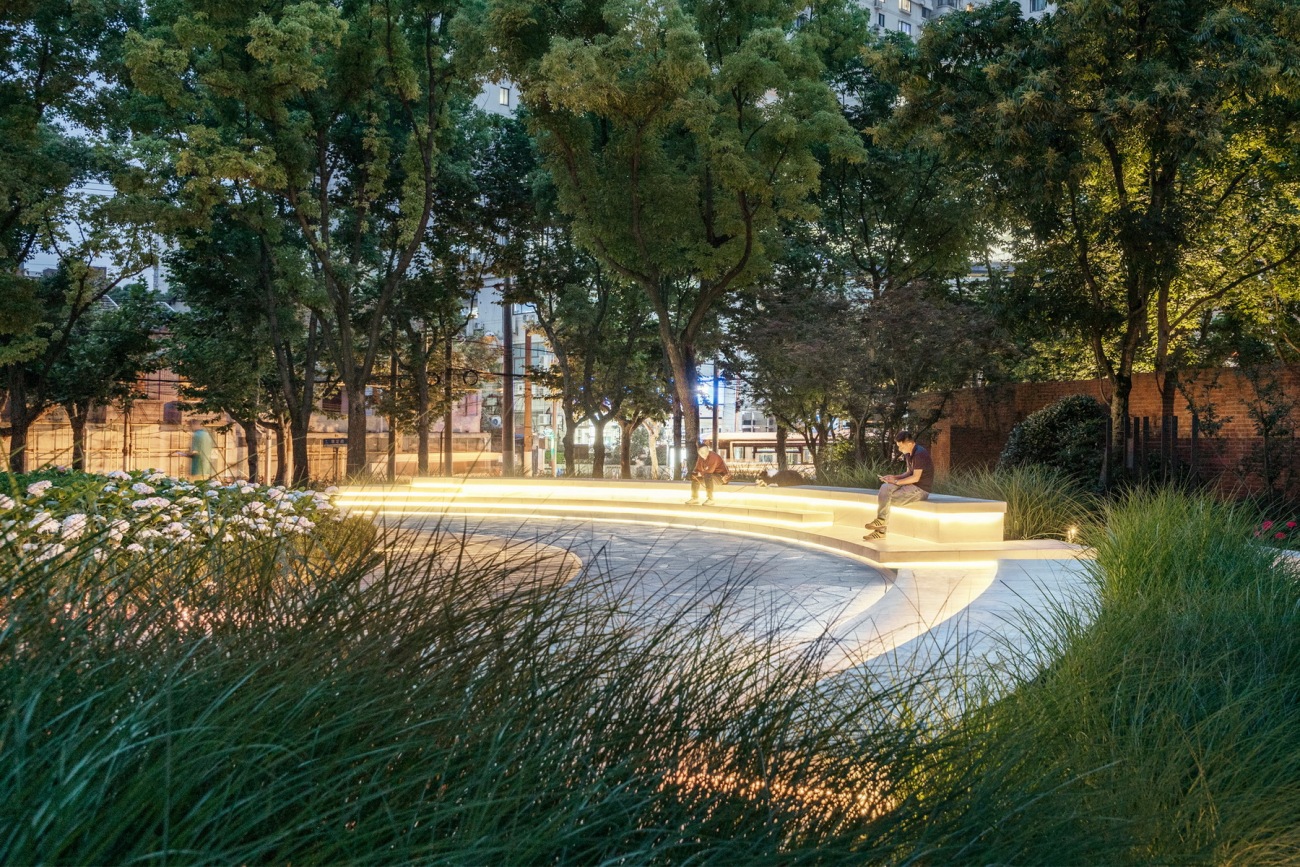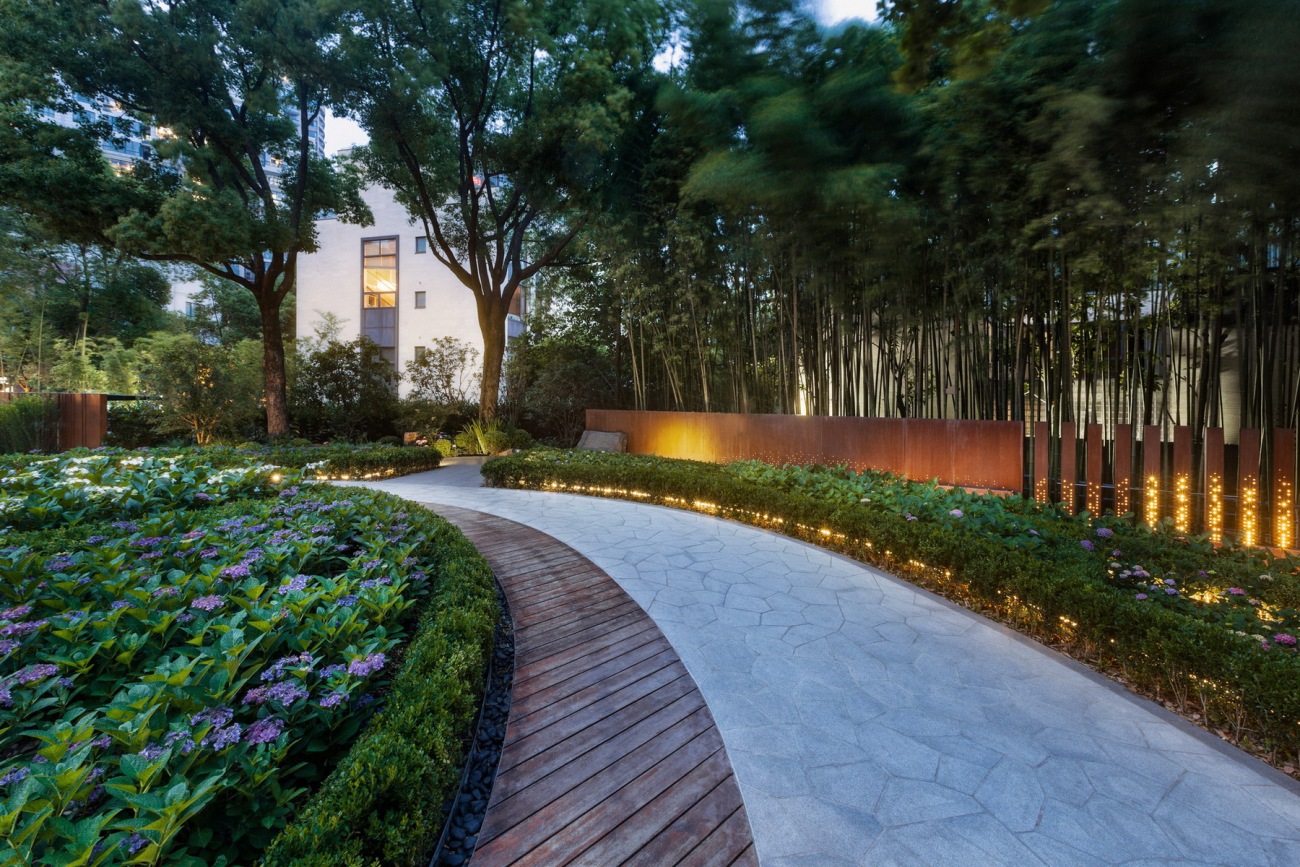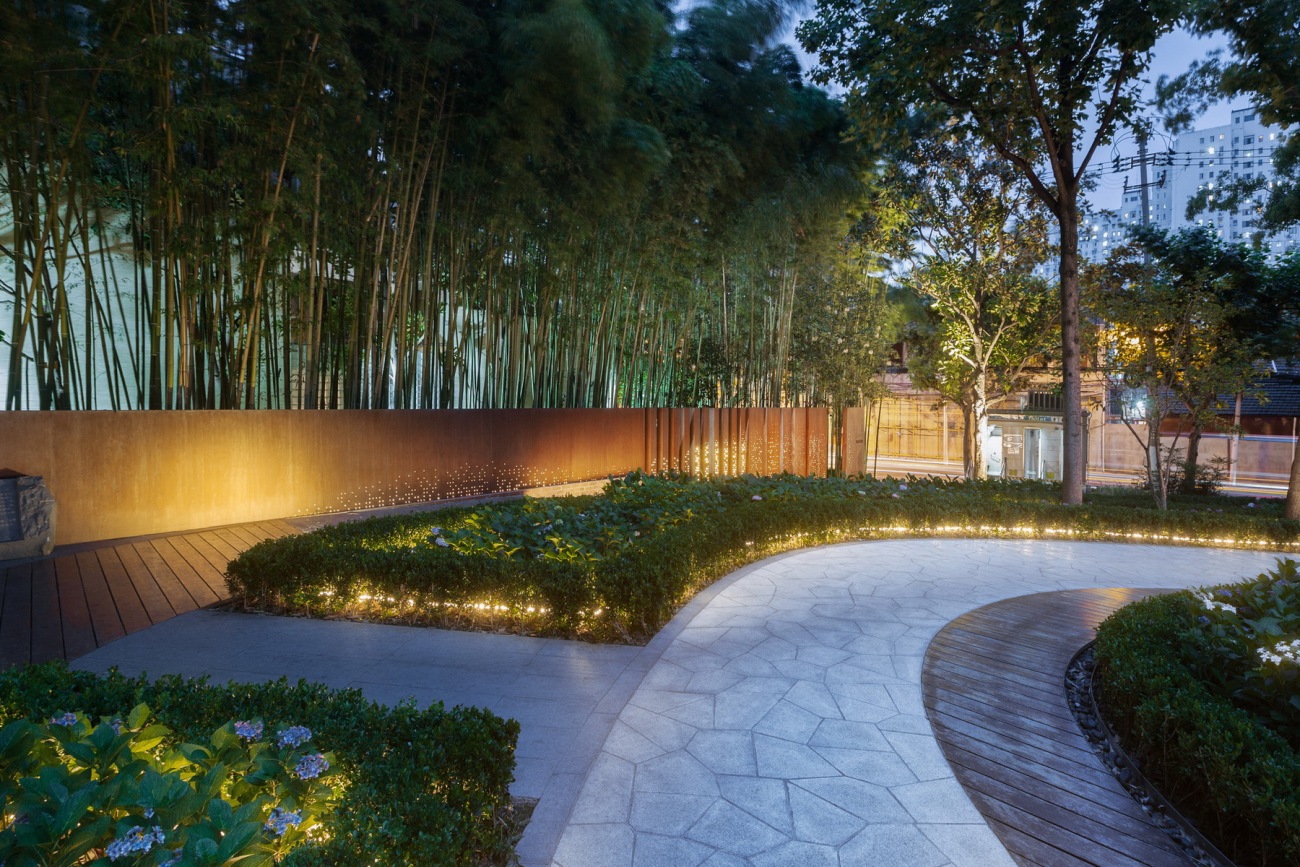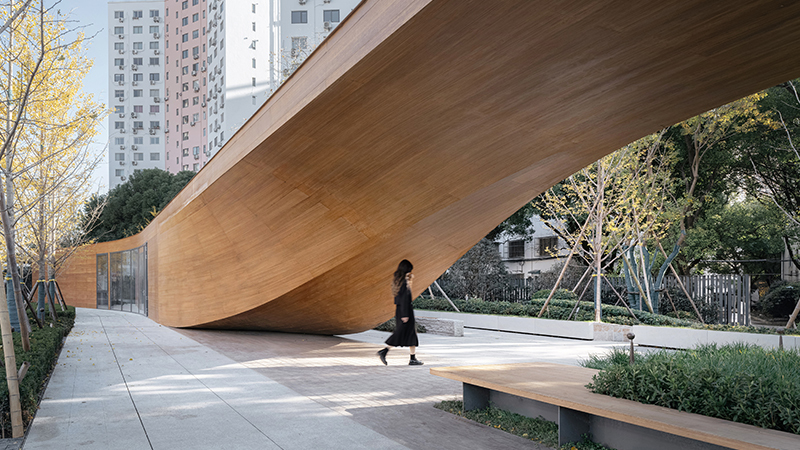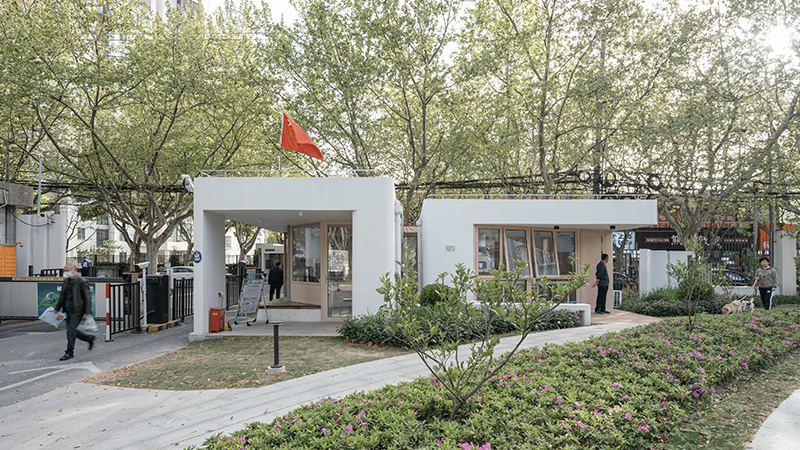重构:场地记忆中的鹦鹉螺曲线
Abstraction: the NAUTILUS as a site gene
曹家渡花园位于上海市静安区康定路余姚路路口,原名康余绿地,占地约3000㎡,最初采用日本设计师星野嘉郎的方案于2003年建成。表面上,经年历久整体空间呈现老态;核心问题则是当初偏传统园林的具体节点与路径营造、以及大量曲线景墙构成的复杂内向空间,与当代的市民日常体验需求并不相符。而场地内大量常绿大乔木下的中下木层次生长态势较差,也需进行整体优化。
Caojiadu Garden is situated at the crossing of Kangding Rd.and Yuyao Rd. Covering an area of 3000㎡, it was built basing on the design scheme from Japanese designer HoshinoYoshiro.
The existing space, which is composed of deteriorated footpaths and a large amount of curvy walls, appears to be rather intricate and inward. Its current status is not able to provide adequate spaces for users. The planting also requires upgrading as dense covering of canopy layer produces a dark environment below, which caused a poor sun exposure for shrubs and ground covers.
▽项目区位
▽更新前现状分析
▽设计生成
考虑到最初邀请当时知名的日本设计师做的原方案并实施,项目委托方并不建议我们做较大范围的调整,而是以类似“微更新”的方式对场地与绿化进行梳理。我们迅速找到了一条有效的更新路径,即:在全面保留现场大树的前提下,放弃场地中偏园林的复杂折线手法,简化和梳理统治整体空间的大量曲线空间,并结合曲线空间将场地中隐含的“鹦鹉螺”曲线用更简洁的方式再现出来。从而以此基于场地记忆重构口袋公园的空间结构。
Considering Hoshino Yoshiro’s precedent well-known scheme, the client encourages a minor upgrade over a significant change. This micro upgrade majorly focuses on spatial organization and planting upgrading. Therefore, we developed an efficient design method, in which existing trees are maintained, former complicated zigzag routes are abandoned, and dominant curvy spaces are simplified to emphasize the signature “nautilus” of the site.
▽保留大乔木与林下场地的关系
▽绿化景观层次与休闲场景
▽场地鸟瞰
激活:鹦鹉螺曲线的空间效能与趣味
Activation: Functionalize the NAUTILUS
本次更新前,场地内缺乏短暂停留的休憩空间,随意设置的坐凳与其他设施让绿地空间显得十分杂乱。于是,我们在设计中结合“鹦鹉螺”曲线布局停留休憩空间,并使功能空间景观化、融入整体景观结构。同时基于现场需求调研,为晨练人群、周边居民的遛鸟活动匹配了相应的场地空间与设施。
Instead of providing appropriate resting space, the site was filled with randomly distributed benches and other facilities before renovation, which made the site fairly chaotic. We weaved in recreational space following the NAUTILUS framework and blend the functional space in the general spatial structure. Based on site survey, we also provide space and facilities for morning workout and bird-walking for local residents.
▽核心景观区俯瞰 / “鹦鹉螺”曲线空间布局
▽发光休闲台阶坐凳与绿化景观
▽发光休闲台阶与保留红砖景墙
▽发光休闲台阶引发的活动
▽休闲台阶、遛鸟空间与绿化景观的融合
▽景观空间引发的趣味活动
我们一方面在空间上强化“鹦鹉螺”曲线作为景观体验主轴的功能与趣味,在优化、突出沿街感受和3处主要入口景观的同时,也在恰当与必要之处设置一些更快捷的进入与行为连接路径,以满足场地中存在的不同行为需求。
NAUTILUS is highlighted as a backbone for spatial experience connecting various functions and ambiences. In this premise not only the look of street front and three major entrances are optimized. The necessary small openings and quick connections are also provided to satisfy needs of various behaviors.
▽康定路入口景观
▽新增景墙与台阶花景
▽星光耐候钢板景墙与保留竹林
▽西侧入口节点 ©CreatAR Images
曹家渡花园的更新设计,既实现了整体清晰结构、功能相对完善的“园”的重塑,也彻底改变了更新前在视线与行为上都过于内向、杂乱的整体感受,使之更好的融入城市街景,达成了从传统街头绿地转向当代“口袋公园”的更新目标。
The renovation of Caojiadu Park not only rebuilds an open space with clear structure and full functions, also entirely transfer the inward spatial experience to a more street-facing pocket park. This transformation achieved the goal of “traditional street planting to modern pocket park”.
焕新:都市核心区唯一的一体化花境
Character: the unique integrated parterre in Shanghai
现场以香樟为主的大乔木长势良好,是难得的都市绿荫,却也在相当程度上影响了现状下层花灌木的生长,关于下层绿化的调整也成为本次更新的重点工作。在这里,我们放弃了传统园林造景式的绿化搭配方式和缺乏主干结构的点景式花境做法,而是坚定地转向匹配鹦鹉螺曲线空间结构的绿化配置。将下层绿化分为常绿骨架和具有表现能力的花草境两个类型,并选用半耐阴的绣球作为最主要的花境植物。于是,曹家渡花园更新后俨然成为上海都市核心区鲜见的超大型一体化花境,不仅特征鲜明,绿化景观结构稳定、层次丰富,也便于后期养护和管理。
Well- grown camphor trees provide a precious green cover in the site. However, the overly thriving tree canopy also gave negative effects to lower level plants. In this context, the planting upgrading of shrubs and ground covers becomes a key issue of this renovation. We did not follow traditional way of gardening, in which backbone structure is missing, instead, a planting scheme fitting the shape of “NAUTILUS” was adopted. In the current scheme, shrubs are divided into two types: evergreen as spine and perennial as leaves. Hydrangea was selected as main species for parterre due to its trait of shade tolerance. In this sense Caojiadu park becomes one of the biggest integrated parterres in core area of Shanghai. The general planting appears to be not only of a unique look, but also of a stable structure, abundant layers and low maintenance condition.
▽特色花草境空间分析
▽林下景观肌理
▽沿街的绣球花境
问源:口袋公园的基础空间逻辑
Foundation:Basic spatial logic of Pocket Park
口袋公园是当下国内城市更新与公园城市建构的热点议题,我们曾在上海乐山绿地口袋公园的设计中尝试用“口·袋·公·园”的方式讨论当代中国大城市口袋公园的基础职能与内涵。当我们用同样的方式来看曹家渡花园的更新设计时,则发现曹家渡花园三处主要“入口(口)”结合人行道绿化空间的整体优化,不仅将口袋公园更好的融入了街道空间体验,也恰好呈现了它的“公共性(公)”。
Pocket park design is an important issue in current domestic urban renewal and park city practice. We tried to discuss the basic functions and contents of contemporary pocket park in Chinese big city in the practice of Leshan pocket park design. With the same approach, here we found the three main park openings combined with streetscape enable a better blending of pocket park and street front space. On top of this, the combined space also exhibits a sense of “publicness”.
▽从人行道看向曹家渡花园
▽从花园内部看向康定路的景观
同时,基于场地记忆重塑的“鹦鹉螺”曲线,首先让曹家渡花园具备了完整的“园”的结构,而这个结构也成为相关“职能空间(袋)”植入的基础。
In Caojiadu garden project, the site memory bearing NAUTILUS create an integrated structure of park and furthermore presents a foundation of various functions.
▽花园中心景观
▽鹦鹉螺曲线景观空间引发的趣味活动
▽花园中心景观夜景
▽鹦鹉螺曲线景观空间与星光景墙
▽鹦鹉螺曲线景观空间与星光景墙
由此,在曹家渡花园的更新设计中,我们发现“口·袋·公·园”中的“口”与“园”的互动关系或许是支撑整体更新的基础空间关系和底层逻辑,而曹家渡花园在空间上随山就水的整体自然花境特征也因之成型。
In conclusion, the interacting relation between open interface and inner space structure of the park might be a basic spatial logic supporting the whole renovation design of Caojiadu Park. The spatial characteristic of Caojiadu Park with parterre as key element is naturally generated in this context.
▽过程演示
▽设计总平
项目信息:
项目名称:上海曹家渡花园更新设计
设计单位:VIA 维亚景观
项目完成时间:2021年5月
设计规模:约3000㎡
项目地址:上海市静安区康定路余姚路交叉口
主持设计师:孙轶家、周密
设计团队:孙轶家、周密、妥朝霞、马丽、盛云琦、巩红蕾、张亮、施曼婷、敬波、范英英、纪慧敏
业主单位:上海市静安区绿化管理中心
施工单位:上海静安园林绿化发展有限公司
照明顾问:OUI light
设备顾问:胡婕、秦勇
施工图协作:上海市浦东新区规划建筑设计有限公司
摄影师:CreatAR Images、孙轶家
更新日期:2023-03-10 14:36:43
非常感谢 VIA维亚景观 带来的精彩项目, 查阅更多Appreciations towards VIASCAPEdesign for sharing wonderful work on hhlloo. Click to see more works!

